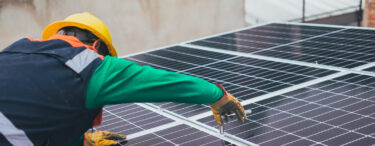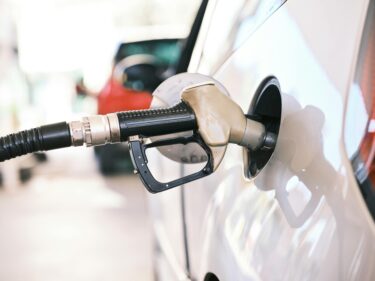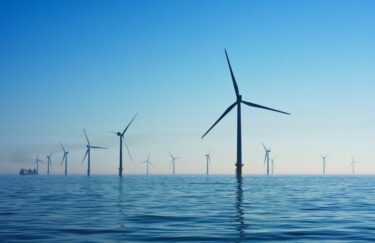Contents
- Technology options
- Deployment options
- Scalability opportunities
- Barriers to implementation
- Contact us
Share this article
In this series, following our guidance on how CEO’s can boost net zero investment, Anthesis’ energy team share insights into the technologies needed to support the low-carbon energy transition. In this second article, Jamie Cara-Southey, Technical Director for Zero Carbon Power, examines onsite power generation and storage, its potential to support a low-carbon future, and how it can meet industry challenges.
As companies pledge to achieve net zero, the market demands technologies that offer genuine pathways to these commitments. Striking pledges is just the beginning – implementing them requires effective, long-term planning. This gap between intention and execution leads to a market need for technologies that go beyond short-term benefits and support a low-carbon future.
What technology options are available for onsite power generation and storage, and how do they work?
There are several technologies available to generate and store power onsite. Below are some of the most widely implemented and how they work:
Photovoltaic (PV) panels
Photovoltaic panels contain cells made from semiconductor materials. When sunlight hits these cells, it excites electrons, causing them to move and create an electric current. This direct current is then converted to alternating current by an inverter, making it suitable for use in power-consuming devices
Wind turbines
Wind turbines harness the power of the wind to turn blades connected to a shaft. This shaft spins a generator, converting kinetic energy from the wind into electrical energy. This electricity is then conditioned and, like a PV installation, is fed into the local grid or directly into buildings.
Battery storage
Battery storage solutions store electricity in chemical form. When excess electricity is available, it’s used to drive a chemical reaction that stores energy. Later, when electricity is needed, this stored energy is released by reversing the chemical reaction, converting it back into electrical energy. This allows us to store electricity when it’s abundant and use it when it’s required, ensuring a consistent power supply.
Where can these technologies be successfully deployed and what scenarios are they not suitable for?
It is important to account for the local context when selecting an onsite energy technology, considering the regional energy landscape, policies, incentives, and any potential unintended consequences, such as noise from turbines or end-of-life hazardous waste from PVs and batteries.
In the UK and internationally, photovoltaic (PV) panels are among the most widely adopted onsite power generation technologies. It is generally the simplest to install, with a highly predictable seasonal yield. However, onshore wind faces significant hurdles in the UK due to planning regulations.
For wind, additional analysis is required using computer and consideration of potential environmental impacts, including effects on local wildlife, landscape aesthetics, noise pollution, shadow flicker, and interference with seismological recording equipment, communication facilities, and aviation radar.
Renewable sources aside, in some circumstances, local electrical grid capacity constraints can render projects commercially unviable, but this requires assessment on a case-by-case basis by the relevant District Network Operator (DNO).
How can the technologies be scaled to meet the challenges of industry?
All three technologies —solar, wind, and battery— are modular and scalable. Constraints usually arise around the capacities of onsite and offsite infrastructure. Nevertheless, employing smart controls can allow for deploying these technologies beyond the existing capacity in certain instances. Typically, when a proposed installation includes provision for future additional generation or storage, the onsite infrastructure is designed to incorporate potential expansion. Bespoke techno-economic models are frequently developed to determine the most viable combination of technologies, considering both the current and projected future demand profiles of a site. We recently conducted a study for a large UK university which incorporated 25MW solar and 5MW wind in conjunction with thermal battery storage, effectively making the site carbon neutral.
What are the barriers to scaling implementation?
Essentially, the primary barriers to scaling the implementation of these technologies are cost, spatial constraints, and environmental and planning conditions. Local DNO infrastructure, arterial roads, railway lines, and rivers are often cited as insurmountable obstacles; however, this is largely because surmounting them can render a project commercially unfeasible.
How does onsite power generation and storage support the transition to a low-carbon future?
As part of their net zero transition and roadmap, organisations must identify viable solutions that support the decarbonisation of their unique portfolio of emissions at the speed required. The technologies included in this article are just some of the potential opportunities available to organisations. To assess which technologies are right for your organisation, we would recommend a holistic site audit to identify improvement opportunities and measures that will result in high returns within the required payback period.
The technologies offer a dual benefit: immediate reduction in carbon emissions and a long-term strategy for reshaping energy consumption and distribution patterns. By decentralising energy production and storage, we promote a new model of power consumption that’s more sustainable.
Combining wind and solar offers a synergistic advantage, as the output from one can offset periods when the other is low. Battery storage can smooth out the intermittent nature of these renewables, capturing excess energy for release during low production or peak demand. Batteries can also be used to shift demand peaks to times that are cheaper and/or less carbon intensive. Larger consumers can benefit from localised energy grids, which integrate wind, solar, and storage to deliver consistent power.
By diminishing our dependence on fossil fuels, these interventions considerably reduce greenhouse gas emissions, with every renewable kilowatt-hour replacing those from carbon-intensive sources.
Related Content
We are the world’s leading purpose driven, digitally enabled, science-based activator. And always welcome inquiries and partnerships to drive positive change together.





